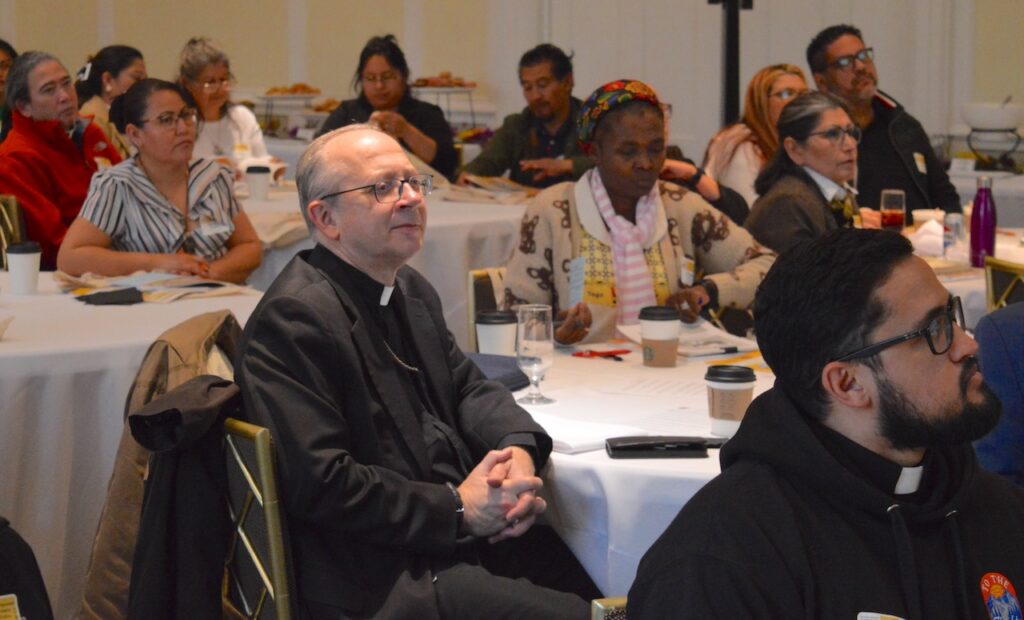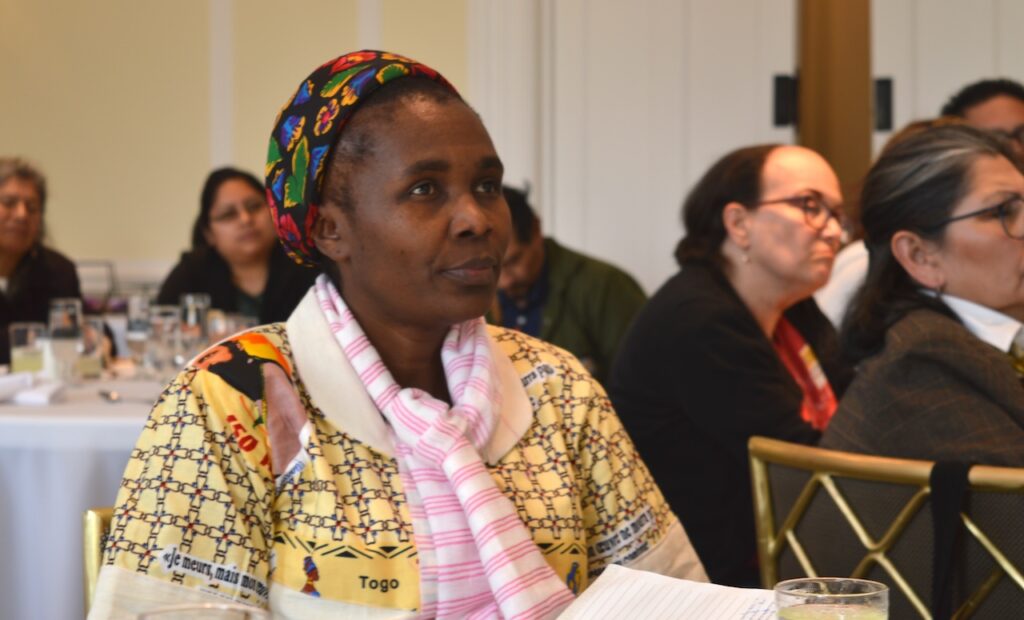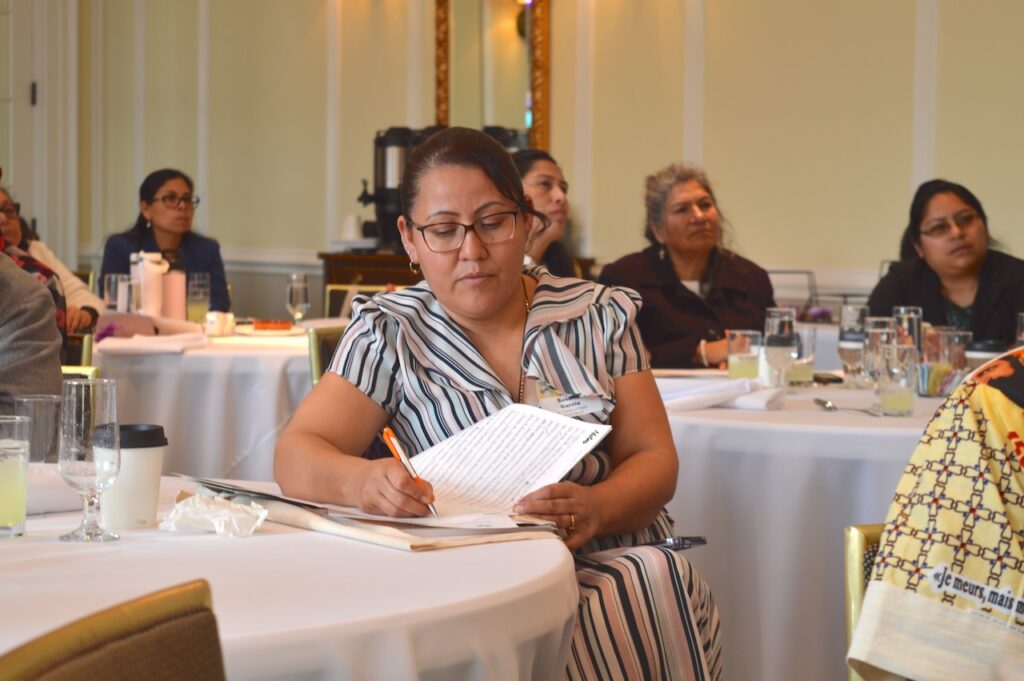Certain metrics suggest that the Catholic Church in the U.S. is struggling. A recent Pew Research Center survey found that 8.4 people leave the Church for every individual who joins, and that only 29% of Catholics attend weekly Mass.
Though these statistics are real and troubling, it might be easy to forget that in 2022, the U.S. Religion Census found that the total Catholic population in the U.S. had actually grown by 2 million people in the past 10 years.
The same census found that the center of gravity in the Catholic population had shifted from the Northeast to the South and Southwest. All this information tracks with another Pew Research Center revelation from 2022: the proportion of American Catholics who are Hispanic/Latino has grown, up from 33% in 2013 to 42% and climbing.
Anecdotally, said Bishop Barry C. Knestout, “As I go around the diocese and do confirmations, at least 50% of the young people being confirmed are Hispanic.”
It’s therefore crucial, said diocesan Office of Ethnic Ministries director Daniel Villar, to make sure the Hispanic/Latino faithful are involved in ministry in the Church at every level, and in a way that serves the whole Church.
To that end, around 80 Spanish-speaking parish leaders – including pastors, parochial vicars, those on parish councils, and youth ministers – met at Lewis Ginter Botanical Garden, Richmond, March 15 for a diocesan in-service session on the National Pastoral Plan for Hispanic/Latino Ministry, approved by the United States Conference of Catholic Bishops (USCCB) in 2023.
The Encuentro process
“This process began at the grassroots,” said Villar.
In 2013, U.S. bishops decided to have another “Encuentro,” a nationwide process designed to “take the temperature of the Hispanic/Latino community in the United States,” said Villar. It was the fifth such endeavor, the first of which began in 1972.
From 2017 to 2018, the fifth Encuentro took place at parishes, then at the diocesan level, then at the regional level, and finally at the national level. Spanish-speaking parish leaders met and spoke about challenges and potential solutions within their various ministries. The result was the 2023 pastoral plan, titled “Missionary Disciples Going Forth with Joy.”

Last fall, Villar attended the regional in-service session in Washington, D.C., along with six diocesan priests. On March 15, it was time for the diocesan in-service session, where the document was presented to parish leaders in our diocese.
“After reaching the national level, this process came back to the regional level, then the diocesan level, and now it will go back to parishes,” said Villar. “Think of a mountain: one climbs up, reaches the peak, and climbs down with experiences to share.”
Following Mass celebrated by Bishop Knestout and an introduction by Villar, Alejandro Aguilera-Titus, assistant director for the Subcommittee of Hispanic Affairs at the USCCB, delivered two hourlong presentations, split by a group discussion. To close the session, Villar instructed the leaders to speak in their parish groups about the next steps.
“This plan gives Hispanic ministry guidelines; it gives direction, it gives focus,” said Villar.
There were two items from the document that garnered particular interest. The first was a discussion on how to make Hispanic ministries more organized; the second was on retaining youth interest after confirmation.
“Our Spanish-speaking committees have to ‘professionalize,’” said Aguilera-Titus. He explained that Spanish-speaking committees often don’t have a strong formal structure or routine, and this is something they can try to adopt.
“We [in the Hispanic community] have a sense of ministry that is highly collaborative; the English-speaking approach is more siloed, self-sufficient, and structured,” said Villar.
“But [in the Hispanic community] our approach can lead to being involved in too many things at once; we can try to do everything and, sometimes, end up accomplishing nothing. So, how can we take the cohesion of the Hispanic approach, and combine that with the structure you often see with English-speaking groups?”
Susana Garcia, who traveled with a group of ten from St. Francis of Assisi, Rocky Mount, said that a focus for her was on Catholic youth.
“For all of us, it’s important to instruct young people and make sure they have good formation,” said Garcia.
Aguilera-Titus added that many Hispanic young people are the ones who will go on to become priests, deacons and leaders, a point that Bishop Knestout commented on.
“I feel very strongly that it’s my responsibility as bishop … to accompany our Spanish-speaking leaders, a community that’s important to us not only now, but in our future,” he said.
Intercultural competency
An example of intercultural competency in leadership, said Villar, can be found at Our Lady of Lourdes, Richmond. Father Jonathan Goertz, pastor, and Father Armando Herrera, parochial vicar, are both Spanish speakers and were at the in-service. At Our Lady of Lourdes, there is a Spanish Mass at 1 p.m. on Sunday, and there are bilingual Masses every Sunday at 6 p.m. and on holy days.
“In addition to the priests, Deacon Steven Cottam is bilingual. Their pastoral associate is trilingual,” said Villar. “There are other employees there for whom Spanish is not their first language, but they speak fluent Spanish. Their approach in accompanying and supporting the Spanish-speaking community at Our Lady of Lourdes is embedded in the structure of the parish itself.”
Sister Isabelle Kahambu Valinande, a Comboni missionary sister who works with the Spanish-speaking community at Our Lady of Lourdes, speaks nine languages. She said that she wishes her Legion of Mary groups – one English-speaking, one Spanish-speaking – could attend the same meetings.

“There is richness when one learns the language of another,” said Sister Isabelle. “Language has always been part of encountering one another.”
But the culture of sharing at Our Lady of Lourdes, said Sister Isabelle, starts with the pastor: “Father Goertz is very open – he includes everybody.”
“Among the Hispanic/Latino community, there is much richness they can bring to the Church,” she added.
Father Santos Ramirez, administrator of St. Joseph, Martinsville; and St. Francis, Rocky Mount, traveled three hours for the conference.
“The ideas shared here today are very important,” said Father Ramirez. “The Hispanic community is a blessing for the diocese. You could not have the mystical body of Christ without the Hispanic community. Just like the American, African, African American, Vietnamese communities, and others, all of us – we are all brothers.”
“Missionary Disciples Going Forth with Joy” is a ten-year plan. Villar said that another diocesan in-service event will be held in 2026.
“My vision for the implementation of the plan at a parish level is for Hispanic ministries to be more structured and cohesive,” said Villar.

